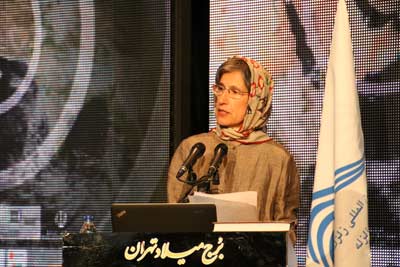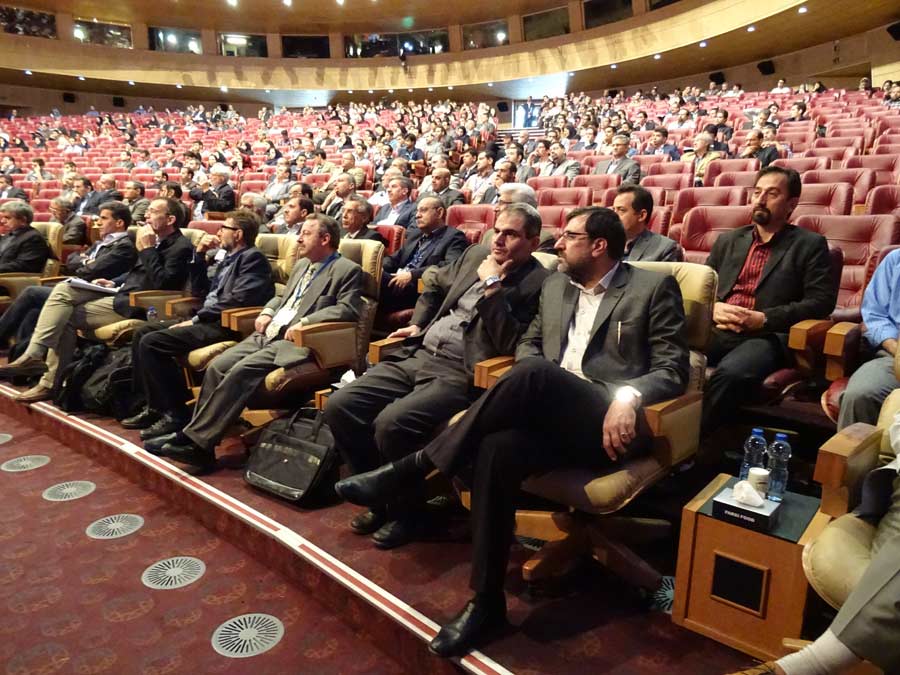Message of UNESCO Assistant Director‐Generalfor Natural Sciences,Flavia Schlegel, to the7th International Conference on Seismology andEarthquake Engineering (SEE7), 18-21 May 2015, Tehran, Iran
The vulnerability of our societies has increased. So has the numberof fatalities and the value of the economic damage caused bydisasters. Disasters are increasing in frequency, complexity, scopeand destructive capacity.
UNESCO operates at the interface between natural and socialsciences, education, culture and communication playing a vital role inonstructing a global culture of resilient communities in a multidisciplinarymanner. UNESCO assists countries to build theircapacities in managing disaster and climate risk and with their abilityto cope with disasters. UNESCO will utilize its position as the UNAgency mandated in Education, Sciences and Culture to address anumber of challenges discussed today and which are underscored inthe Sendai Framework for Disaster Risk Reduction.
DRR needs to be mainstreamed into the education systems andUNESCO promotes disaster preparedness education within Educationfor Sustainable Development (ESD), which helps leaners tounderstand the relationship between drivers and effects of disastersalerts them to be vigilant about the consequences of their decisionsand actions, and to provide them with opportunities to take actionfor positive change.
In the Natural Sciences Sector we need to move more from theScience of what to the Science of How. Enough information doesexist but it needs to be communicated to policy makers andpractitioners. Geographical distribution of existing scientific andresearch capacity needs to be improved. Technology transfer cannotbe sustained unless the recipients are well equipped, humanresources wise, to operate the systems provided.
UNESCO will continue its work in Establishing / strengtheningplatforms for Knowledge Exchange and Scientific Cooperationpromoting and fostering knowledge exchange in geological, hydrometeorologicaland marine hazards. UNESCO will continueconducting activities and research that improve quality of data, earlywarning systems, hazard mapping and vulnerability assessments tosupport the first priority of the post 2015 framework for action in DRR,understanding disaster risk.
Within the same line, we will continue Strengthening ScientificCapacities for Disaster Risk Reduction: by facilitating andimplementing technical training workshops and research activities indisaster risk reduction to improve the capacities of countries to copewith natural hazards.
Furthermore, we will raise awareness within the focal points inMember States of our International programmes such as theInternational Hydrological Programme and the Man and Biosphere,so that they understand better the challenges and mainstream DRRissues in their sectors and become active members of their nationalplatforms.
We will raise awareness of managers of World Heritage Sites,Biosphere Reserves and Geoparks on the hazards they are dealingwith, ensuring that their perception of risk reflects the scientificknowledge.
Focusing on the fourth and last priority of the Sendai framework for DRR on Enhancing disaster preparedness for effective response, and to Build Back Better in recovery, rehabilitation and reconstructionUNESCO will continue to undertake post‐disaster field investigationsin order to determine the causes of the disaster that can informpolicy and produce and disseminate lessons to be learned.
We will further continue our work on Improving Early WarningSystems by supporting Member States in establishing effective earlywarning systems for different hazards such as tsunamis, floods anddroughts, setting up Standard Operating Procedures and communitydrill exercises.
Ladies and gentlemen, currently there are over 1,000 World HeritageSites in 161 Countries, 17 of which are located in our hosting country,the Islamic Republic of Iran. UNESCO has produced guidelines andtraining to protect world heritage sites. We have already evidencethat are efforts are bearing fruit. After catastrophic damage causedby a volcanic eruption in October 2010, UNESCO carried out anemergency operation for the mitigation and recovery of BorobudurTemple, a World Heritage site in Indonesia. In 2014, followinganother volcanic eruption, the disaster emergency responseprocedures established under the UNESCO project helped mitigatingthe impact and speeding up the recovery process.
Finally, the role of journalists in raising awareness by reporting onnatural disasters and climate change cannot and should not beunderestimated. UNESCO has been training journalists in Asia to beable to respond to this important task.
Ladies and gentlemen, allow me to focus now on the topic that isbringing us together today and our related work. We have currentlythree regional networks on Reducing Earthquake Losses; one for theextended Mediterranean region, RELEMR, one for Central Asia,RELCAR and another one for South East Asia, RELSAR. Thesenetworks have been promoting regional scientific cooperation andknowledge exchange in seismology and earthquake engineering formore than 20 years. They foster data exchange, joint activities andresearch, hazard assessments, dissemination of earthquakeengineering data, improve the seismic provisions of building codesand of course contain a training element. We are committed inmaintaining these networks as we deeply believe in providingscientist and engineers with a platform where good science can bemade and exchanged under the umbrella of the United NationsScientific Organization. A number of spin off products have beengenerated from these networks. The setting up of n EarthquakeEarly Warning System for the Dead Sea is a typical example. Talkingabout Earthquake Early Warning systems (EEWS), I would like tomention that this is an area of interest for us, which we will bepursuing further in the years to come. Acknowledging thatprevention is the best option when dealing with earthquakes thusfocusing on evidence based building and retrofit codes and efficientand effective control systems, we still would like to explore furtherthe issue of preparedness via EEWS as these provide an opportunityfor multidisciplinary research and thus the chance for seismologistsand earthquake engineers to further their research while cooperatingwith other disciplines. Furthermore, I would like to take thisopportunity and mention of the workshop on “Structure, Tectonicsand Earthquakes in the Allborz‐Zagros‐Makran Region” that ourInternational Centre for Theoretical Physics is organizing along withthe Geological Survey of Iran and Cambridge University later thisweek (from 22 to 31 May 2015 in Tehran). ICTP is one of our pillars inthe capacity building component of our actions.
Ladies and gentlemen, I would like to draw now your attention toanother event that will be starting tomorrow. The United Nationsalong with the International Institutes for Earthquake Engineeringand Seismology (IIEES) are organizing a regional workshop on theRole of Science and Technology in Formulating and ImplementingNational to Regional Roadmap for the Sendai Framework for DisasterRisk Reduction. DRR is a prime example of the UN working togetherat Global level via the UN Plan of Action to national level via theUNDAF process, such as the 2011‐۲۰۱۶ cycle for Iran.
Before I close, I would like to thank personally our host theInternational Institutes for Earthquake Engineering and Seismology(IIEES) and the Government of the Islamic Republic of Iran for notonly organizing the event but for the great cooperation they haveextended to UNESCO.
I am looking forward to receiving the fruitful results of both, theregional workshop and the 7th International Conference onSeismology and Earthquake Engineering.



